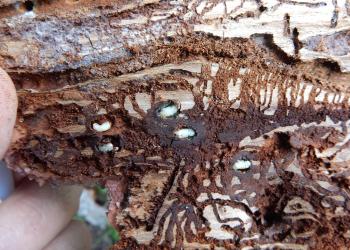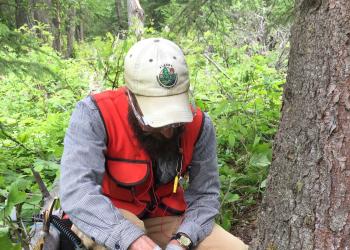Forest Health
Forest Health Protection
Nested within the State, Private, and Tribal Forestry branch of the U.S. Forest Service, Forest Health Protection monitors across all lands to meet the needs of federal, state, and private stakeholders and Tribal Nations. Select forest diseases, insects, noninfectious disorders, invasive plant, and other forest health topics from the menu below for detailed information, as well as links to partner pages. Check out the iNaturalist Alaska Forest Health Observations Project and help collect forest health data across the state!
Pubs & ProductsReport ObservationsRemote Sensing
Aerial Detection SurveyGround Detection SurveyHazard Tree Management
Common Damage Agents in Alaska
Forest Diseases

Tree diseases in Alaskan forests can fundamentally change the ecosystem and lead to huge economic loss to the timber resource.
Forest Insects

Insects play a major role in forest ecology, influencing stand dynamics and timber growth.
Invasive Plants

Invasive plants are a risk to forest and subsistence ecosystems. The changes in plant communities can alter below and above ground habitat.
Noninfectious Disorders

Wind, water, weather events, and wildlife can damage trees and forests, as well as forest declines like yellow-cedar decline.






